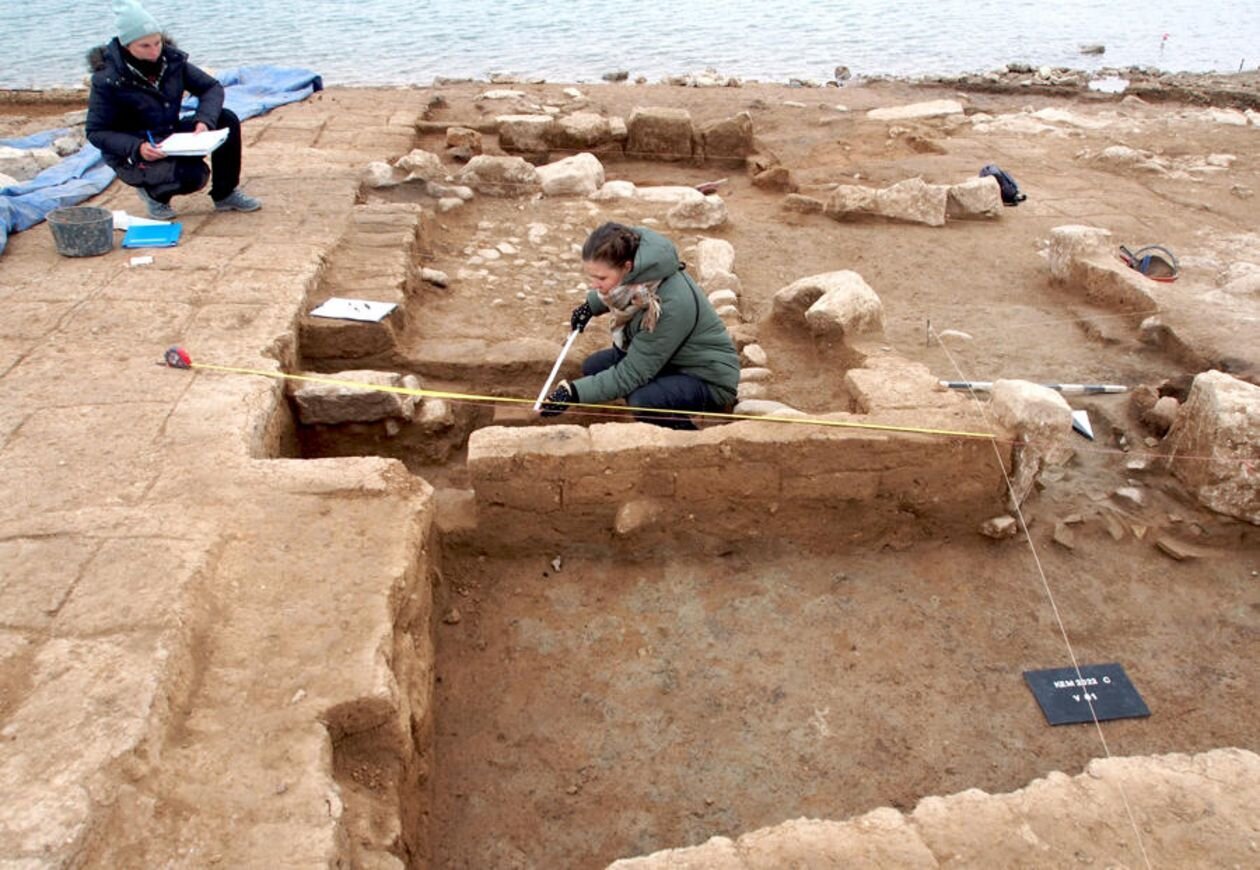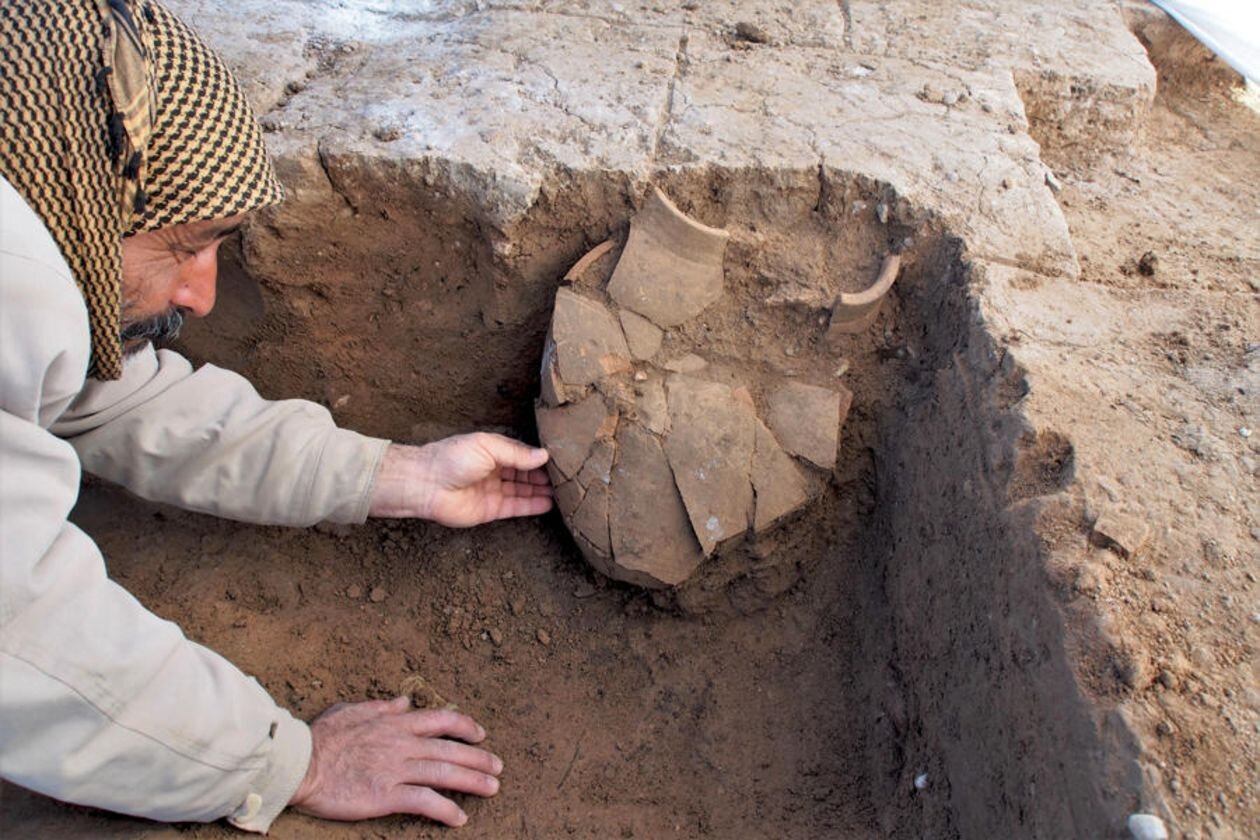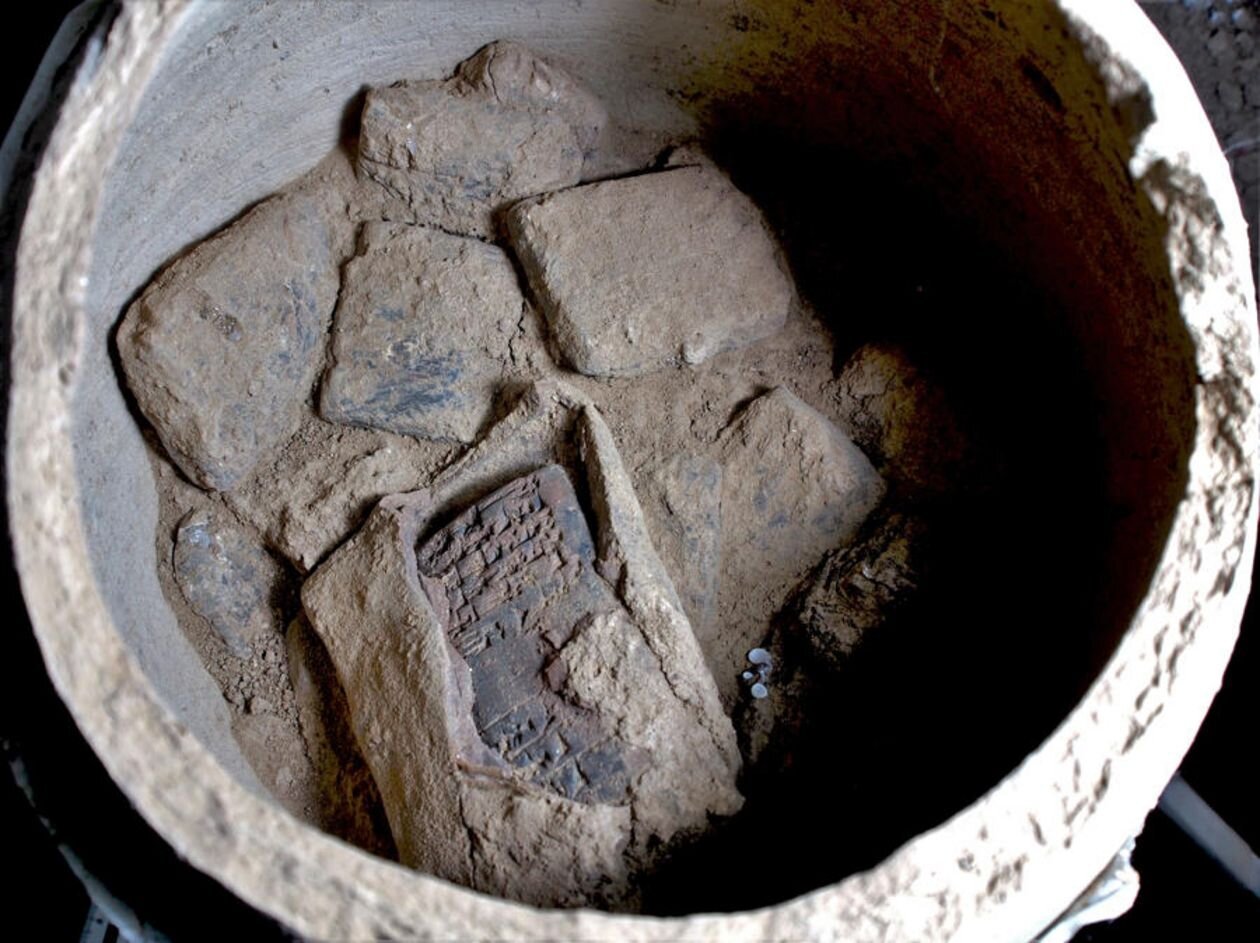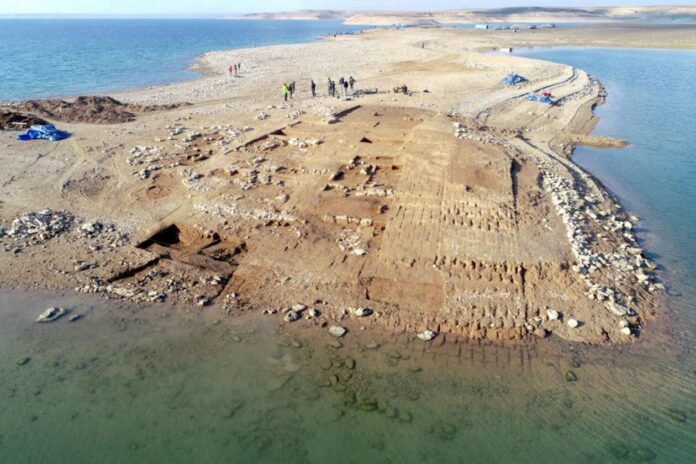A team of German and Kurdish archaeologists has made an extraordinary discovery: a 3,400-year-old city from the Mittani Empire era, once situated on the Tigris River. This ancient settlement reemerged from the Mosul reservoir earlier this year as water levels plummeted due to severe drought conditions in Iraq. The extensive city, featuring a palace and several substantial buildings, is believed to be ancient Zakhiku, an important center in the Mittani Empire (circa 1550–1350 BC).
Climate Change and the Reemergence of the Ancient City
Iraq is among the countries most severely impacted by climate change. The southern region, in particular, has been experiencing extreme drought for several months. To prevent crop failures, large volumes of water have been drawn from the Mosul reservoir—Iraq’s most crucial water storage facility—since December. This reduction in water levels led to the unexpected reappearance of a Bronze Age city that had been submerged for decades without prior archaeological exploration. The city is located at Kemune in the Kurdistan Region of Iraq.

Urgent Excavation Efforts
The sudden reemergence of the city placed archaeologists under immediate pressure to excavate and document significant portions of this large, important site before it was submerged again. Dr. Hasan Ahmed Qasim, a Kurdish archaeologist and chairman of the Kurdistan Archaeology Organization, along with German archaeologists Jun.-Prof. Dr. Ivana Puljiz (University of Freiburg) and Prof. Dr. Peter Pfälzner (University of Tübingen), quickly decided to conduct joint rescue excavations at Kemune. These excavations took place in January and February 2022 in collaboration with the Directorate of Antiquities and Heritage in Duhok (Kurdistan Region of Iraq). A team was assembled within days, and funding was swiftly secured from the Fritz Thyssen Foundation through the University of Freiburg. The team faced significant time constraints as it was uncertain when the reservoir’s water levels would rise again.

Significant Findings and Preservation Efforts
In a short period, the researchers managed to map much of the city. In addition to a palace previously documented during a brief campaign in 2018, several other large structures were uncovered. These included a massive fortification with walls and towers, a monumental multi-story storage building, and an industrial complex. The extensive urban complex dates back to the Mittani Empire era (approximately 1550–1350 BC), which controlled large parts of northern Mesopotamia and Syria. Ivana Puljiz emphasized the importance of the huge magazine building, which likely stored vast quantities of goods from across the region. Hasan Qasim noted that the excavation results indicate the site was a crucial center in the Mittani Empire.

The research team was astonished by the well-preserved state of the walls, which sometimes stood several meters high despite being made of sun-dried mud bricks and submerged for over 40 years. This preservation is attributed to the city’s destruction in an earthquake around 1350 BC, which buried the buildings under the collapsed upper parts of the walls.
Discovery of Cuneiform Tablets
Of particular interest was the discovery of five ceramic vessels containing an archive of over 100 cuneiform tablets. These tablets date to the Middle Assyrian period, shortly after the earthquake disaster. Some tablets, possibly letters, are still encased in their clay envelopes. The researchers hope this discovery will provide valuable insights into the end of the Mittani-period city and the beginning of Assyrian rule in the region. Peter Pfälzner remarked on the near-miraculous survival of the unfired clay tablets after decades underwater.
Conservation Measures
To prevent further damage to the site from rising water, the excavated buildings were completely covered with tight-fitting plastic sheeting and gravel fill as part of a conservation project funded by the Gerda Henkel Foundation. This effort aims to protect the walls of unbaked clay and any other artifacts still hidden in the ruins during periods of flooding. The site is now once again submerged.




